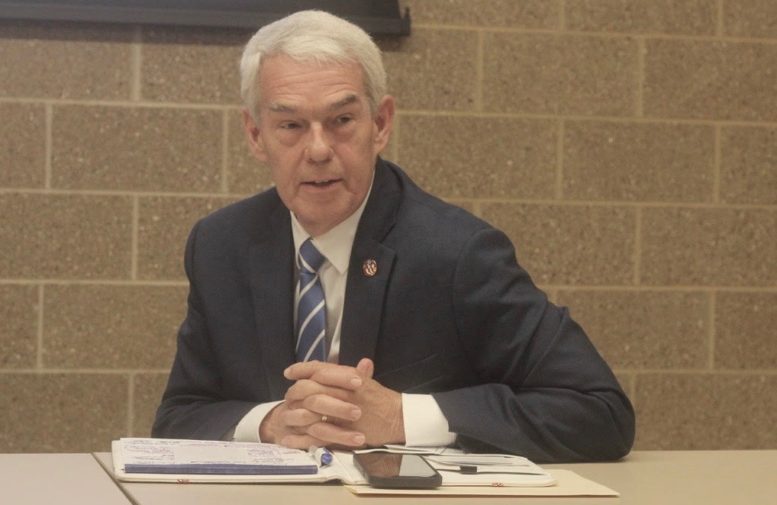By DAVID DUPONT
BG Independent News
Channeling his former social studies teacher self, Randy Gardner began his presentation to the BG Chamber of Commerce’s Legislative Update recently by handing out copies of an article by Lt. Gov. John Husted.
It’ll give anyone not interested in listening to him speak something to occupy themselves, Gardner quipped. And, no, there wasn’t a test.
It’s been awhile since Gardner taught at Otsego High School. He left to become a politician and ended up serving 33 years in the state legislative as both a state representative and a state senator. Last year, Gov. Mike DeWine tapped him as the state’s chancellor of higher education.
So he was comfortable sitting up front with fellow Republicans State Sen. Theresa Gavarone and State Rep. Haraz Ghanbari.
“I love town halls and open discussions,” he said. “It’s not always easy, not always comfortable. I have always asserted that our job as public officials is not always to be comfortable. It’s not to have it easy, but to face the public and answer their questions and do our best to represent them.”
He thanked voters for sending him to the legislature where his work led to his appointment as chancellor. As chancellor he works with and advocates for the 35 state college campuses.
Affordability of attending those campuses is a top concern whether it means earning a skills certificate in a trade or a doctorate, “anything that might advance families and students in the state.”
Gardner had a surprising message: “For many students, earning a college degree in Ohio can be more affordable today than 15 years ago. Almost nobody ever hears that. Many could be skeptical.”
From 2007 to 2022, he said, inflation went up 37.8 percent, but at his alma mater, Bowling Green State University, tuition and fees went up 35.1 percent, less than inflation. When factoring in financial aid from the institution and need-based aid from the federal government “the price is even more affordable than that,” he said.
“It is remarkable how hard institutions are working to attract students.” The declining number of high school graduates makes it harder and more important for colleges and universities to recruit students and keep them.
Gardner also noted that College Credit Plus has allowed more than 6,000 students to earn an associate degree before they received their high school diploma. And that has saved families millions in tuition.
There are many paths to consider career education, community colleges, universities. “I encourage every family, every student to ask: Is this affordable? Is this the right path for me?”
Some programs that provide vocational credentials and skills training are not eligible for traditional Pell grants and other financial aid, he said, but the state does provide assistance.
Also, through the state’s Techcred program, companies can get up to $2,000 to improve the skills of their current employees “to strengthen your business and to make them better workers.”
Post-secondary education whether, it’s a credential or a graduate degree, is important for the state’s economy, Gardner said. “If we just increased bachelor and associate degrees by 5 percent, we would have added $1 billion in savings and additional revenue to the state budget.”
Having more education translates into higher wages, higher rates of employment, and even better health.
Institutions of higher education are also working more closely with industry. Through one program, industry identifies equipment they need people to be trained to use, and the state helps colleges purchase that machinery.
Gardner cited the advanced manufacturing center launched last fall by BGSU, Owens Community College, and University of Findlay as the kind of partnership that’s needed.
Ohio has encouraged state universities to charge students who earn their undergraduate degrees in Ohio in-state tuition when they continue in their graduate studies.
All this is essential, Gardner said, to make sure Ohio maintains a strong workforce.
Ohio is succeeding in retaining and attracting workers. He said it is fourth in the nation in keeping high schools graduates in state and is making strides in bringing students from out of state.
It’s “brain gain,” he said, instead of “brain drain.”





